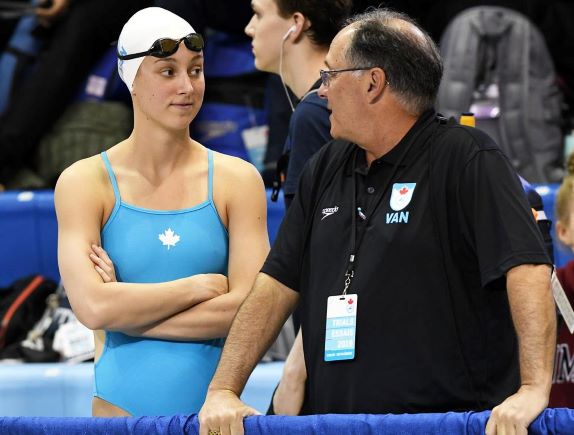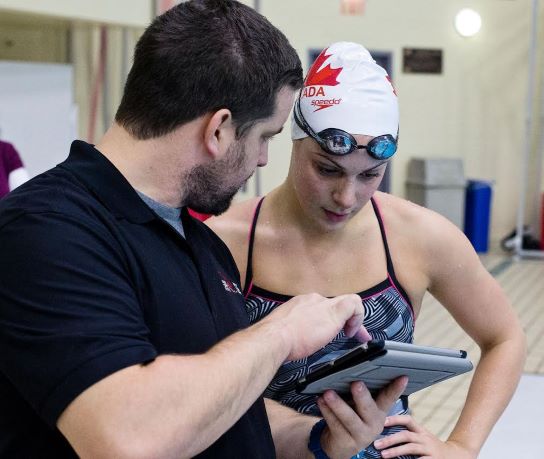Swimming Canada embraces transformative athlete development philosophy

Swimming is one of the most popular sports in Canada.
For the last eight years our country has been routinely churning out Olympic and Paralympic athletes who have made a splash in the international scene.
Much of this success stems from the work of John Atkinson, Swimming Canada’s Director of High Performance, who has been fine-tuning their athlete pathway incrementally since taking the reins following the 2012 Olympics. And now the organization has announced the launch of an innovative new athlete development philosophy.
Recognizing that not all pathways are linear, and that each athlete has unique needs, their new philosophy takes into account holistic concerns such as mental well-being and life skills. Evolving out of Sport for Life’s Long-Term Development framework, it aims to empower coaches to identify talent and nurture athletes along their Podium Pathway. All of this is captured in two key living documents: the Appropriate Athlete Development (AAD) document and the Athlete Development Matrix (ADM). It’s part of a larger strategy to align all levels of the sport.
“This has been a multi-year project we’ve been working on with our provincial and territorial sections, and there’s been a huge amount of engagement with our provincial technical leads as we build our new ADM. We’ve had a phased roll-out, so we can provide bite-sized pieces of information as things progress,” Swimming Canada’s Director of Sport Development Suzanne Paulins told Sport for Life.
“We want to talk about appropriate development, and really look at what’s appropriate for athletes at each age and stage of development. Different swimmers flourish in different ways, and their pathways aren’t necessarily linear. We want to keep in mind that we’re developing people as well as athletes, so really this is athlete development rooted in human development.”
Years of collaboration
Swimming Canada first adopted the principles of Long-Term Development in 2008, and in the years following they collaborated with Sport for Life and provincial and territorial technical and coach association reps on a competition review that resulted in an overhaul of their national meet calendar. They’ve worked on implementing their vision through their provincial partners, offering webinars describing the context of the AAD and ADM. Now that the documents are being rolled out to any coach who needs it, Paulins believes the results will be transformative.

“This is a 100-page living document now. I don’t think the work is ever done, and these things are always changing as we learn new things, but launching this now feels like a really good step. We feel good about the material but we also know it’s not done, and that it will be a constantly evolving document,” she said.
Over the years Swimming Canada has worked with Long-Term Development experts from Sport for Life such as Dr. Colin Higgs, Dr. Istvan Balyi and Carolyn Trono. Most recently they collaborated with Vicki Harber, who helped them develop the section related to life skills and social and emotional learning.
“Even more than the documents, it’s been the people who have been hugely instrumental in making this new philosophy possible. The expertise they’ve brought to the table has been invaluable.”
At the most recent Olympic and Paralympic Games, Canada’s swimmers strutted their stuff on the international stage — cementing our country’s reputation as one of Top 5 nations in the world for aquatics. As they continue to see rising membership numbers, they’re trying to ensure the pathway is clear for their swimmers to develop their skills and achieve at the highest possible level.
“Our primary mission and vision is and always will be swimming excellence. We’re a high performance sport, and that’s a strategic priority. Overall, swimmer development is another pillar and we try to balance both sides, but for those swimmers who are on the podium pathway we want to ensure we’re providing the programs and services to make it possible for them to become Olympic and Paralympic athletes. We’re providing the tool kit and the tools to develop every person to their highest potential.”
*Photos Courtesy of Swimming Canada
